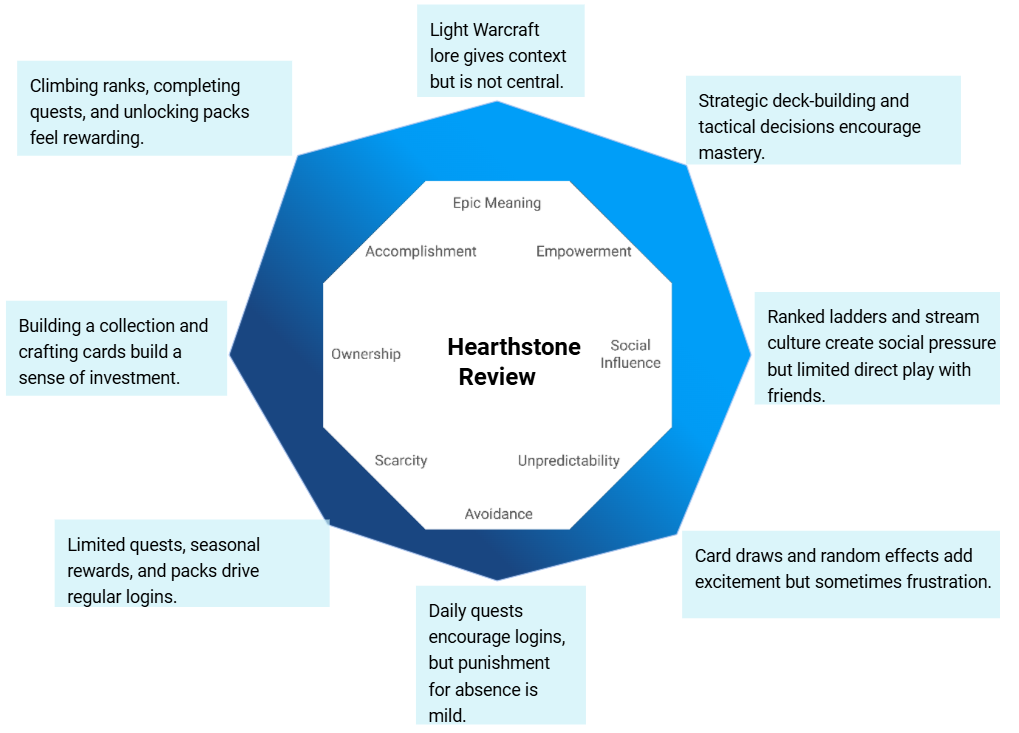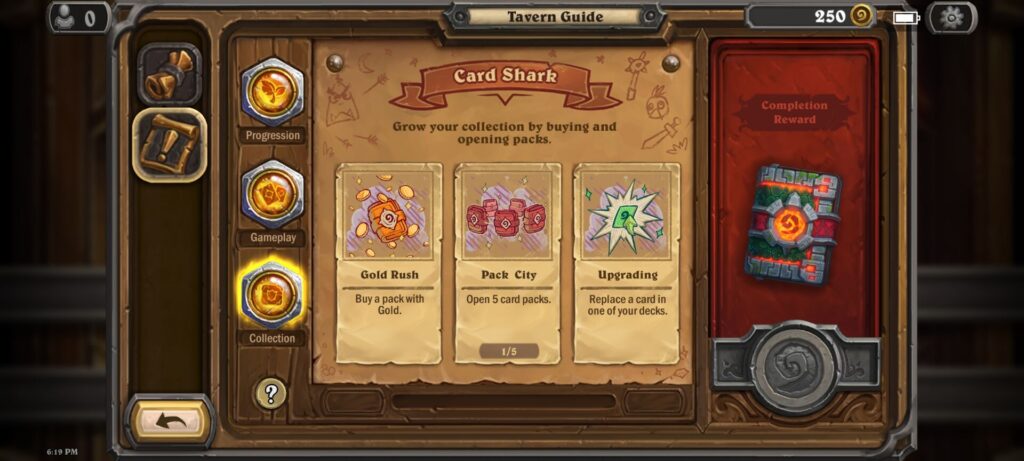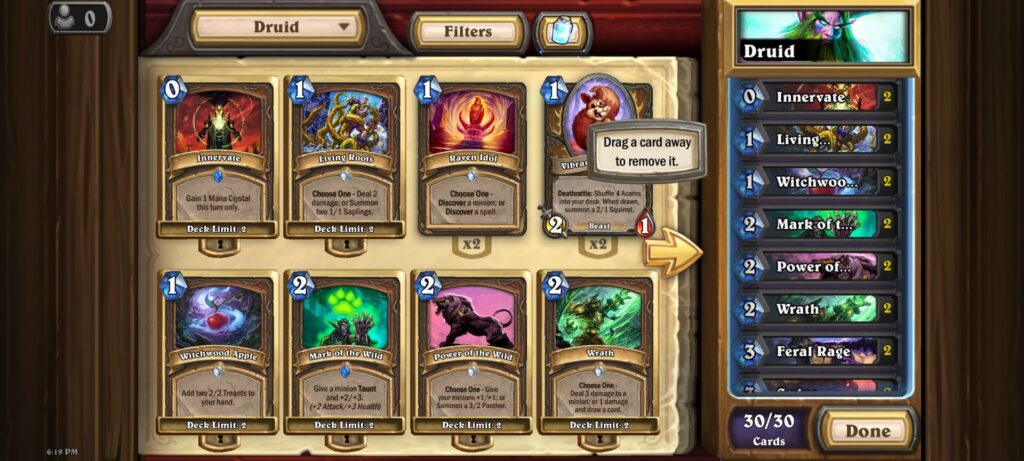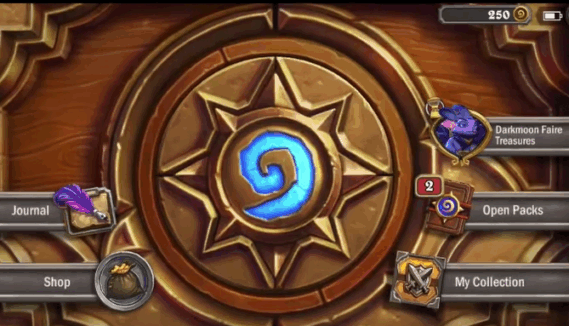Starting a collectible card game can feel overwhelming, but Blizzard’s Hearthstone does a surprisingly good job of welcoming new players. Since its release in 2014, this digital CCG has become a staple in the genre, offering polished design and an accessible entry point. As a new player, my first sessions felt smoother than expected, though the learning curve soon showed itself.
Today, I will conduct a comprehensive evaluation of Hearthstone through the lens of Yu-kai Chou’s gamification framework – Octalysis. Below is a detailed breakdown and analysis:
Octalysis Rating Table
| Core Drive | Score | Evaluation |
|---|---|---|
| Meaning | 6 | Light Warcraft lore gives context but is not central. |
| Accomplishment | 8 | Climbing ranks, completing quests, and unlocking packs feel rewarding. |
| Empowerment | 7 | Strategic deck-building and tactical decisions encourage mastery. |
| Ownership | 7 | Building a collection and crafting cards build a sense of investment. |
| Social Influence | 6 | Ranked ladders and stream culture create social pressure but limited direct play with friends. |
| Scarcity | 5 | Limited quests, seasonal rewards, and packs drive regular logins. |
| Unpredictability | 6 | Card draws and random effects add excitement but sometimes frustration. |
| Avoidance | 4 | Daily quests encourage logins, but punishment for absence is mild. |
GScore: 311
Evaluation Notes:
Scoring range: 1–10. Higher scores reflect stronger implementation of the core drive and greater player motivation.
GScore (Gamification Score): Calculated using the Octalysis Framework tool.
Octalysis Radar Chart

Detailed Analysis
1. Meaning (6/10)
The game draws lightly from Warcraft lore, with recognizable characters like Jaina or Thrall adding flavor. Still, Hearthstone doesn’t lean heavily on storytelling—your motivation is less about narrative and more about competition and collection.
2. Accomplishment (8/10)
Rewards start flowing quickly: the tutorial hands you packs, daily quests encourage regular play, and winning ranked matches feels satisfying. Even small victories—like unlocking a new hero portrait—give consistent reinforcement, making progress feel steady and worthwhile.

3. Empowerment (7/10)
Strategy shines here. It quickly becomes clear that good sequencing and smart trades matter more than just having powerful cards. That said, beginners might feel limited until they unlock more tools for creative deck-building.
4. Ownership (7/10)
Collecting is at the heart of Hearthstone. Building a deck that reflects your own style feels personal, and the crafting system gives you control over how your collection grows. However, progress can feel gated by time or spending if you want competitive decks quickly.

5. Social Influence (6/10)
Leaderboards and ranked ladders push you to improve, and the broader community (Twitch, YouTube) gives strong social context. Still, there’s little direct interaction—no guilds or co-op features—so connections with other players stay surface-level.
6. Scarcity (5/10)
Daily quests, seasonal rewards, and limited-time events add urgency, but scarcity mechanics feel lighter than in many mobile games. You can play at your own pace, though this may reduce long-term stickiness for some.
7. Unpredictability (6/10)
The randomness of card draws and special effects brings excitement, but it can cut both ways. Winning thanks to a lucky outcome feels thrilling; losing because of RNG can feel unfair, especially for new players still learning strategy.
8. Avoidance (4/10)
There’s little penalty for stepping away. Daily quests may pile up, but you won’t lose rank or progress for skipping days. This makes the game more relaxed but less urgent compared to other live-service titles.
Conclusion & Recommendation
Overall, I’d rate Hearthstone 8/10 for beginners. It combines smooth onboarding, rewarding progression, and a strong sense of collection, though the randomness and monetization might frustrate some. If you enjoy strategy, experimentation, and don’t mind a few swings of luck, Hearthstone is one of the most polished digital card games you can start with today.
[Read More] https://us.09gamereview.com/blog/
[YouTube] https://www.youtube.com/@09GameReview


Leave a Reply